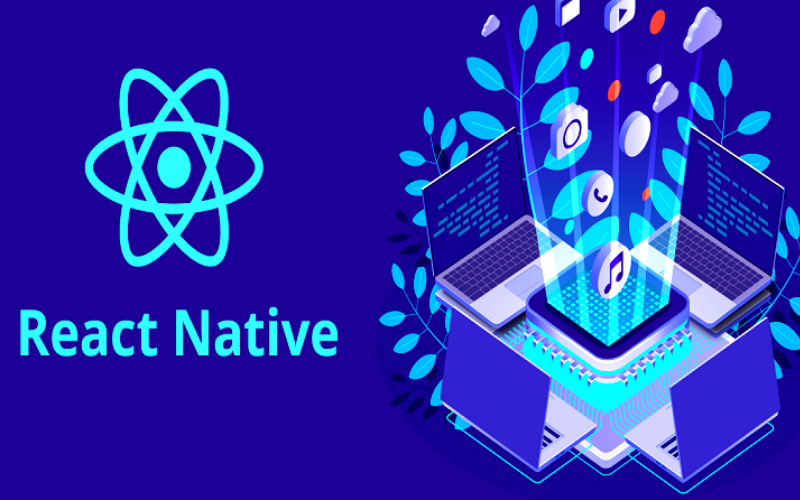This article briefly explains React Native and how you can develop a React Native app.
React Native Overview
Over the long history of transformation, FaceBook has released 2 unique tools: React JS and React Native. If the first was needed to create user interface fragments, then the second framework is designed to develop cross-platform applications. This is the fundamental difference between the two products of the same family.
Since its release in 2015, the React Native platform has quickly attracted attention only because IT industry giant FaceBook was behind it. The first utility from the React family, ReactJS, had already stood the test of time and did an excellent job with its main task – creating a user interface architecture in the face of a huge number of accounts.

It is on it that the FaceBook interface, the most popular and recognizable social network in the world, was created.
Over time, the development team began to work on the second product, which was to create a tool for developing full-fledged mobile applications. Moreover, React Native, due to the evolution of its “little brother,” turned out to be a successful project. It is lightweight and highly functional.
Why Should You Use React Native?
There are already many products for writing and editing code in the mobile applications segment. However, most of the presented platforms have a significant drawback: slow work. React Native is based on JS and can provide fast page rendering.
It should also be noted that in React Native, you can create an application for two operating systems at once—iOS and Android. This circumstance significantly saves time since the developer needs to put in a minimum of effort to adapt the product to two operating systems. Sometimes, the best solution is to hire dedicated React Native developers.
Pros of React Native
The very fact that such giants use applications such as Facebook, Instagram, Skype, and Tesla puts them in the category of stable and time-tested. At the same time, they are popular.

React Native provides a number of quality options:
• JS technology is used to design the code. Today, it is the number one programming language in the world. Over 60% of applications are written with JavaScript.
• The largest component library for rendering user interface fragments.
• In one application, you can simultaneously implement a project for two operating systems – iOS and Android. As a result, you can save time and budget.
• Easy to edit code. You don’t need to rebuild code snippets to make a change.
• Similarly, you can use your “author’s” library to draw components.
Develop An App With React Native
To create a simple application, you can use a template from Facebook (Create React Native App). It’s easy to install and doesn’t take up much space. After creating the framework, we proceed to the beginning of development. In the future, you will need to acquire useful utilities to facilitate the process.

Step # 1
The first one is the Expo. This is a typical set of libraries and service functions that comes with the installation version of React Native. Expo forms a system of calls to functional components: server, webcam, and feedback modules. In practice, the advantages of Expo allow you to create optional layers without knowledge of native code, which in turn makes the program code truly cross-platform.
Step # 2
After installing the simulator and debugger (you can get by with the Google Chrome browser), you can open the application in test mode on your Android phone or tablet. Further, the application can be launched directly on the device through simple manipulations with the code.
The code syntax in the template looks like a regular HTML document in which you need to add React components. Fragments can be the simplest; the main condition is the integration of the rendering function, in which the changes made will be updated on the device side.
Quick & Easy Development with React Native
React Native is a complete, feature-rich platform for developing, deploying, and running mobile applications. An offshore mobile app development company teaches how to work with it. This is perhaps the fastest way to create a software module based on JS components. The hallmark of React Native is the ability to develop products for several operating systems at once – iOS and Android. In simple words, it saves a lot of time and budget.
